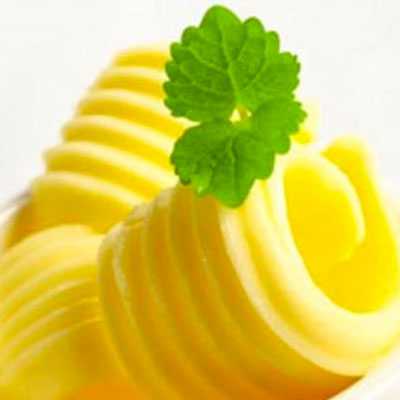Why Are They Called Snickerdoodles?
The origin of the name "snickerdoodle" is somewhat unclear. One theory is that it's derived from the German word "Schneckennudel," which is a kind of cinnamon-dusted sweet roll, somewhat similar to a snickerdoodle cookie.
Another possibility is that the name has no particular meaning at all and was simply invented for its whimsy. It was common in the New England area of the United States in the 19th century to give cookies and pastries playful, whimsical names.
No matter where the name came from, snickerdoodles are a beloved treat known for their characteristic tangy flavor from cream of tartar, and their fragrant cinnamon-sugar coating. The origin of the cookie itself is likely German or Dutch, but it's become a classic part of the American culinary landscape.
What Can Replace Cream Of Tartar In Snickerdoodles?
Cream of tartar is used in snickerdoodle cookies to give them their distinctive tangy flavor and chewy texture. If you don't have cream of tartar, you can substitute it with a few different ingredients:
Lemon Juice or Vinegar: Both of these are acidic like cream of tartar. Use double the amount of cream of tartar required. So, for 1 teaspoon of cream of tartar, use 2 teaspoons of lemon juice or white vinegar.
Baking Powder: Baking powder can also be used as it contains cream of tartar along with baking soda. However, this might alter the classic snickerdoodle flavor and texture a bit. You can use 1.5 teaspoons of baking powder for every 1 teaspoon of cream of tartar.
Keep in mind that while these substitutes can provide the acidity that cream of tartar brings to a recipe, they might slightly alter the flavor and texture of your snickerdoodles. For the most authentic snickerdoodles, it's best to use cream of tartar if possible.
What Ethnicity Is A Snickerdoodle?
Snickerdoodle cookies are typically associated with the culinary traditions of the United States, but their true origins are a bit of a mystery. Some food historians suggest that they likely have German or Dutch roots, given the tradition of similarly flavored and textured cookies in those cultures.
One theory is that the name "snickerdoodle" could be an anglicized form of the German word "Schneckennudel," a type of sweet roll sprinkled with cinnamon, similar to the cinnamon-sugar topping of snickerdoodles.
Despite these potential European connections, snickerdoodles as we know them today—with their characteristic tang from cream of tartar and their chewy texture—are a classic American cookie, particularly popular in New England. The cream of tartar, a byproduct of wine and grape juice processing, is a distinctly American addition, setting snickerdoodles apart from other simple sugar cookies.
What To Serve with Snickerdoodle Cookies?
Snickerdoodle cookies are delightful treats with a unique cinnamon-sugar flavor. When it comes to serving these cookies, you have a variety of options to enhance their taste and create a well-rounded dessert experience. Here are some ideas for what to serve with Snickerdoodle cookies:
Vanilla Ice Cream: Pair warm Snickerdoodle cookies with a scoop of creamy vanilla ice cream for a classic and comforting dessert combination.
Hot Cocoa or Warm Drinks: Serve Snickerdoodles with a cup of hot cocoa, spiced chai latte, or your favorite warm beverage for a cozy treat.
Chocolate Ganache: Offer various dipping sauces like chocolate ganache, caramel sauce, or even a cream cheese glaze for a fun and customizable dipping experience.
Coffee or Tea: Enjoy Snickerdoodle cookies with a freshly brewed cup of coffee or a soothing cup of tea for a delightful pairing.
Milk or Milk Alternatives: Classic and satisfying, a glass of cold milk or a dairy-free alternative is the perfect accompaniment to these cinnamon-spiced cookies.
What Is The Purpose Of Cream Of Tartar In Snickerdoodles?
Cream of tartar serves several important roles in snickerdoodle cookies:
Leavening: When combined with baking soda, cream of tartar helps the cookies rise, producing a light and fluffy texture.
Tangy flavor: Cream of tartar is slightly acidic, which gives snickerdoodles their distinctive tangy flavor, setting them apart from regular sugar cookies.
Texture: The acid in cream of tartar prevents the sugar in the cookies from crystallizing too much, resulting in a chewy texture as opposed to a crunchy one.
So, while it may seem like an unusual ingredient, cream of tartar is actually crucial for achieving the signature flavor and texture of snickerdoodles. Without it, the cookies wouldn't be the same.
A Delicious Treat with a Quirky Name
Snickerdoodles, despite their whimsical name, carry with them a sense of nostalgia and comfort. This classic American cookie, known for its soft, chewy texture and dusting of cinnamon sugar, has delighted cookie lovers for generations. But where exactly did these cookies originate? While they're widely regarded as an American creation, the origin of the name 'snickerdoodle' remains somewhat of a mystery.
A Possible German Connection
There are theories that snickerdoodles have a German or Dutch background. The name might be a corruption of the German word "Schneckennudel," which translates to "snail noodles," a kind of German pastry. Or perhaps the name came from a New England tradition of giving cookies whimsical names. Whatever the case, these cookies have definitely woven their way into the fabric of American dessert culture.
Baking Traditions Passed Down
Traditionally, snickerdoodles are a popular treat during the holiday season, but their simplicity and deliciousness make them a great choice any time of the year. Whether they remind you of baking with your grandparents, enjoying a treat after school, or a favorite selection from the local bakery, snickerdoodles certainly hold a special place in many hearts. This recipe captures that timeless flavor and texture that we associate with this beloved cookie, giving you a bit of nostalgia with every bite.







































